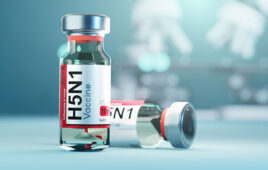
The global ophthalmology market revenue is forecast to increase from $22.2 billion in 2016 to $35 billion in 2023, despite patents expiring for the therapy area’s three most successful products Avastin, Lucentis and Eylea, according to business intelligence provider GBI Research.
The company’s latest report: ‘Global Ophthalmology Drugs Market to 2023’, reveals that new approvals such as Lampalizumab, Fovista and Brolucizumab are expected to exceed the revenue loss of the patent expirations. Lampalizumab is expected to perform particularly well ending the forecast period as the therapy area’s second most commercially successful product just slightly behind Eylea.
The report states that ophthalmology therapy has the ninth largest therapy area pipeline with 839 products currently in active development. Some 67% of products in development for ophthalmological disorders are at the Discovery or Preclinical stages of development, with only 32% currently at Phase I or later. The majority of the pipeline consists of novel active pharmaceutical ingredients (API), with only a small proportion of products being either generics or repositioned from other indications.
Ross Wilkinson, Associate Analyst for GBI Research, commented: ‘‘At the later stages the proportion of drugs that are novel is lower, and at Pre-registration only 59% of products are novel compared to 97% of products at the Preclinical stage. The proportion of the pipeline that is novel is low at later stages due in part to the presence of a large number of generic versions of Allergan’s Restasis, which is the therapy area’s most successful small molecule. The only products more successful than Restasis are biologics. There are a number of biosimilars in the pipeline but these are at earlier stages of development and often spend longer in clinical development than small molecule generics.”
The five key indications within the ophthalmology therapy area are glaucoma, age related macular degeneration, diabetic macular edema, diabetic retinopathy and dry eye syndrome – glaucoma and age related macular degeneration have the most active product pipelines, with 125 and 92 products in development respectively. Despite the majority of pipeline activity being centred on these five key indications, there is also significant interest in developing products for other indications such as allergic conjunctivitis and retinitis pigmentosa. Wilkinson explains: “In 2017, Spark Therapeutics is expected to gain FDA approval for its orphan drug Voretigene Neparvovec, which is currently under development for retinitis pigmentosa and leber congenital amaurosis. If approved, it would not only be the first pharmacological treatment for an inherited retinal disease, but would also be the first gene therapy for any genetic disease to be approved by the FDA.”
In terms of the market landscape, six of the eight most commercially successful companies in the ophthalmology therapy area are among the top 20 pharma companies in the world, including Roche, Allergan and Novartis. However these companies show no ophthalmology specialization with only 5% of their late-stage pipelines consisting of ophthalmology products. Consequently a number of smaller, specialized ophthalmology companies are expected to enter the market. Aerie is one of the 146 fully specialized companies currently developing ophthalmology products and whilst it currently does not market any products it is expected to bring two new products to the market in 2018. Wilkinson added: ‘‘Fully specialized companies account for 34% of the late-stage pipeline but only 28% of the entire pipeline, while companies with no ophthalmology specialization account for 42% of the companies in the ophthalmology pipeline but only 24% of the late-stage pipeline, which suggest that fully specialized company’s products are more likely to reach the market in the near future.’’
Filed Under: Drug Discovery



